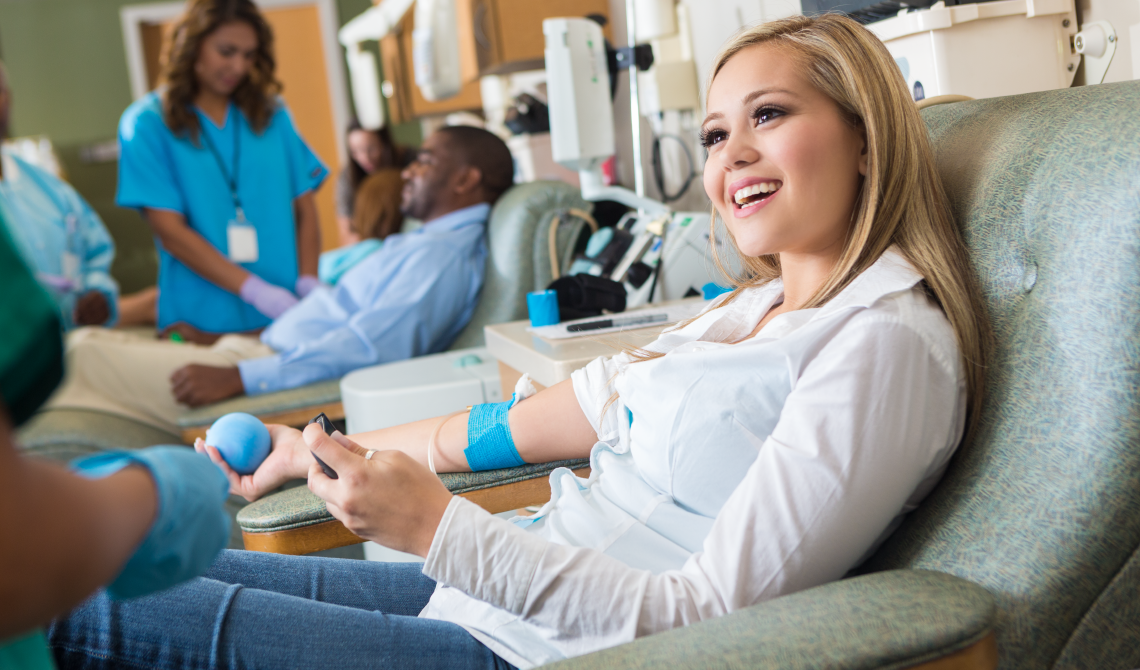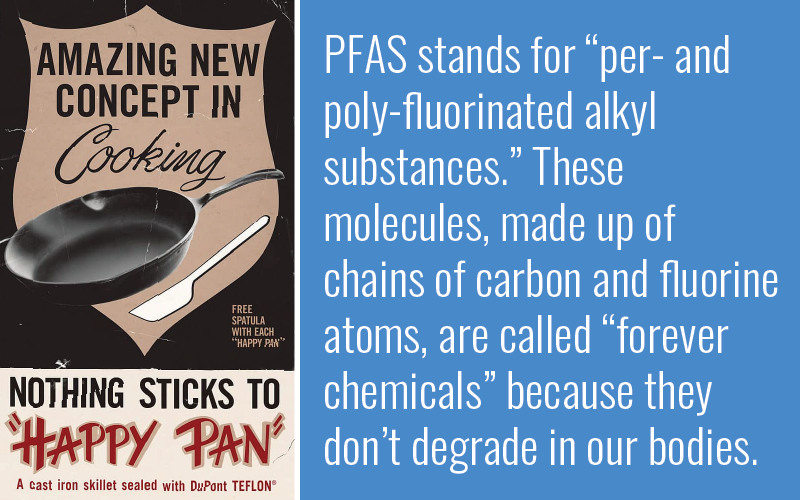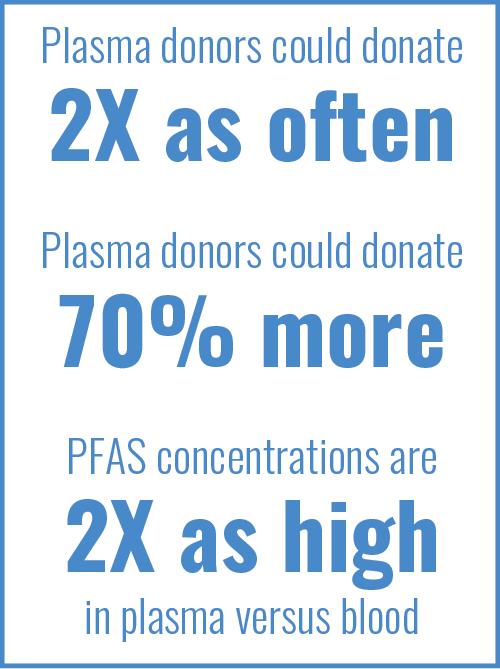
A new study shows plasma donations may cut the levels of “forever chemicals” in the body.
Not only can donating blood or plasma help save others’ lives, it can help with your own health too! This new surprising benefit comes from a recent clinical trial conducted by Macquarie University and published in the journal JAMA Network Open.

1. Forever Chemicals: Perfluoroalkyl and Polyfluoroalkyl Substances (PFAS)
Synthetic PFAS were introduced in 1954 in nonstick pans, and are widespread in everyday items such as:
a. clothing,
b. plastic,
c. food packaging and
d. electronics.
PFAS are also in carpets, and stain- or water-resistant paint and other materials.
PFAS have been used widely, are persistent in the environment and accumulate over time. Several studies have shown that exposure to PFAS may cause cancer.
Back To Top
2. What PFAS Study Found
Firefighters in Australia exposed to high levels of forever chemicals through firefighting foam volunteered for the study.
The study showed that whole blood or plasma donations can reduce (PFAS) in the body.
a. The trial involved 285 Fire Rescue Victoria staff and contractors with elevated levels of a commonly-detected type of PFAS used in firefighting foams.
b. Volunteers were randomly allocated to:
-
-
- donate plasma every six weeks,
- to donate whole blood every 12 weeks or
- to make no donations (the control group) for 12
months.
-
Both blood and plasma donation resulted in significantly lower PFAS chemicals than the control group, and these differences were maintained three months later.
Plasma donation was most effective, resulting in a roughly 30% decrease in average blood serum PFAS concentrations over the 12-month trial period.
How does donating plasma help reduce these chemicals?
-
- Reductions in PFAS levels from blood or plasma donations may be because PFAS are bound to proteins primarily found in the serum; many other organic pollutants are bound to fats.
-
- Firefighters in the plasma donation group donated blood every six weeks, whereas those in the blood donation group donated every 12 weeks.
- Each plasma donation can amount to as much as 800mL compared with 470mL for whole blood.
- Plasma PFAS concentrations are also about two times higher than blood PFAS concentrations, which could make plasma donation more efficient at reducing the body burden of PFAS chemicals.
Why was plasma donation more effective than whole blood donation? 

3. Sharing This Amazing Information
Plasma collection companies and the industry as a whole should work to get the word out about this interesting benefit of plasma donation.
We suggest you put up posters sharing this discovery (“Donating Plasma Can Reduce Cancer-Causing Forever Chemicals in Your Body”), and
a. Hand out small cards to donors with more of the details
b. Use this information in other communications, such as:
- billboards,
- outdoor messages boards at your center and
- in community meetings